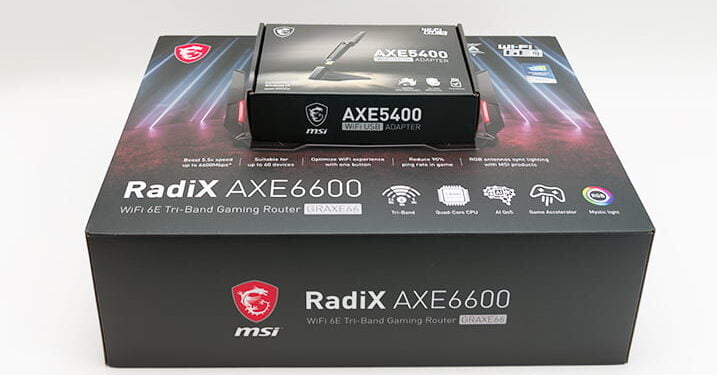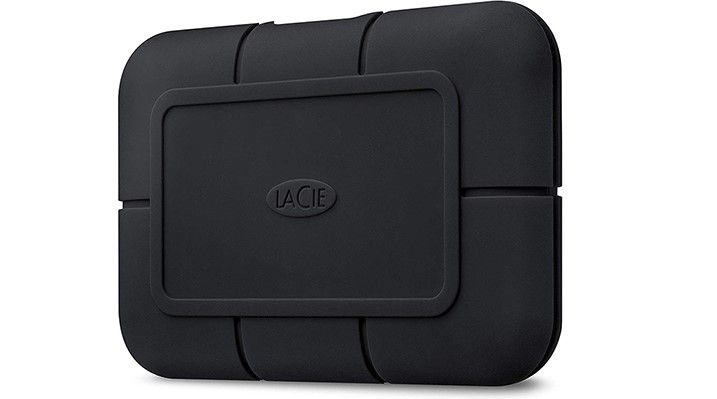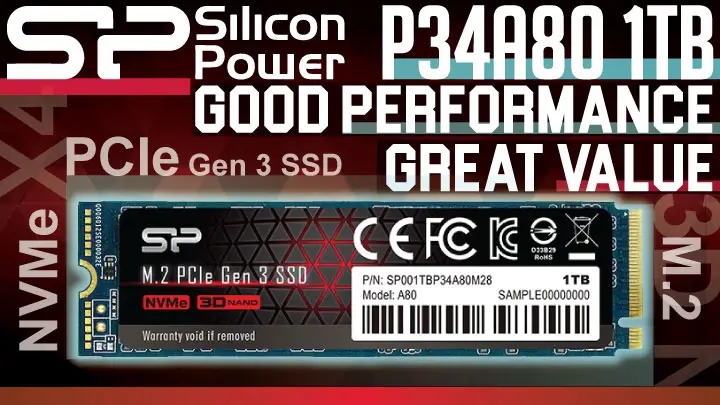
Let us make one thing very, very clear. MSI’s Radix AXE6600 nets buyers a lot of bang for their buck. It is pretty. It is fairly fast, and its range is more than up to the task of covering an entire multi-floor house. This is because MSI reached out to one of the experts in consumer networking hardware OEM/ODM and got them to build a very refined, and custom, WiFi 6E router for them. A company that was the OEM/ODM of choice for most of MSI’s earlier wireless equipment.
To be precise MSI asked (the country of) Taiwan based EdiMAX for a request for quotation on a custom version of their “Acelink” BR-6893GAX WiFi 6E Tri-Band router design (with Acelink seemingly becoming the customer facing ‘brand’ for EdiMAX – think Crucial vs. Micron). A barebones ‘gaming’ router blueprint that has been around for a few years now and EdiMAX simply upgrades the components inside from time to time. In this instance it is basically a customized Qualcomm Networking Pro 810 based router that incorporates more ‘gaming’ orientated features like advanced QoS algorithms… and LED equipped antennas.
On the plus side, it is using 810 hardware and not the lower priced Networking Pro 610. While each of Qualcomm’s Networking Pro series can be tuned to a given price point… in a nut shell the difference between the entry level 612 and mainstream 810 option is 6 vs 8 spatial streams and the addition of an extra radio controller. Which means, that unlike the 610 and its 2 controllers to cover 3 networks, each WiFi network (2.4/5/6GHz) gets its own controller. Thus, MSI has neatly sidestepped one of the largest issues with existing Qualcomm WiFi hardware: trash tier queue depth performance. Please do not get the wrong impression. Qualcomm make good consumer grade hardware controllers but those controllers do not like to “share”. They simply do not have the power to multi-task well enough to handle multiple networks at the same time. This is why cheaper companies just use the 610 and just give you the option of either having a 2.4GHz + a 5GHz network or a 2.4GHz + 6GHz network. Not all three at the same time. So, if you do see that limitation in the specifications… you now know why you should think long and hard before buying it.
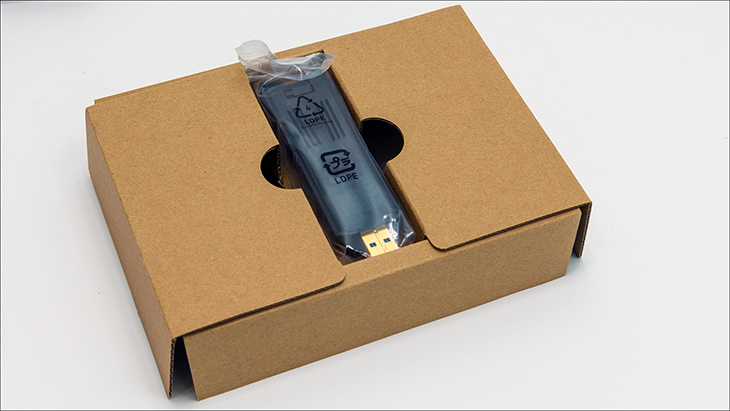
If you have not heard of EdiMAX… that probably is not all that surprising. They are a major (country of) Taiwan OEM/ODM that has supplied networking hardware models for everyone from Asus (e.g. early RT-AC5x routers and USB-AC5x and AX5x series adapters) to D-Link (e.g. DAP-26xx Access Points and DIR-806 router) to even Synology and their RT6600AX. The last of which is pretty much an earlier gen ‘6893 that simply lacks WiFi 6E’s 6GHz band and had the antenna LEDs removed… but said ‘customization’ doubled the original MSRP to a whopping 6 bills (and it still demands 300 USD). In either case, they do not need to advertise to end-users (though with their creation of Acelink that may be changing). They are the ones that build the products that other companies slap a label on and sell to you. So yes. EdiMAX is well known in the industry. Just not at the consumer level.
Moving on. With expectations properly set let’s look at what MSI RFQ’ed and what changes they wanted included to make it a MSI device and not just another EdiMAX clone. Let’s start with the shipping container. Which is classic MSI and not classic Asus/D-Link/Synology/EdiMAX. It is bold, it is a bit brash but it is actually on the conservative side for a ‘gaming’ router. Also on the positive side is MSI has included a lot of information. Enough information that if one takes the time to read it all they will have a very good handle on what the MSI Radix AXE6600 Gaming Router has to offer.
The same holds true of the internal protection configuration. Consisting of a form-fitting foam and multiple compartments this is a box that can take a pounding and shrug it all off. Put simply you can drop this box, kick it across a soccer pitch, then punt it back to the other end and the Radix AXE6600 would probably be fine. As such we do consider this shipping container to be above average and a rather good example of what all networking companies should be doing.
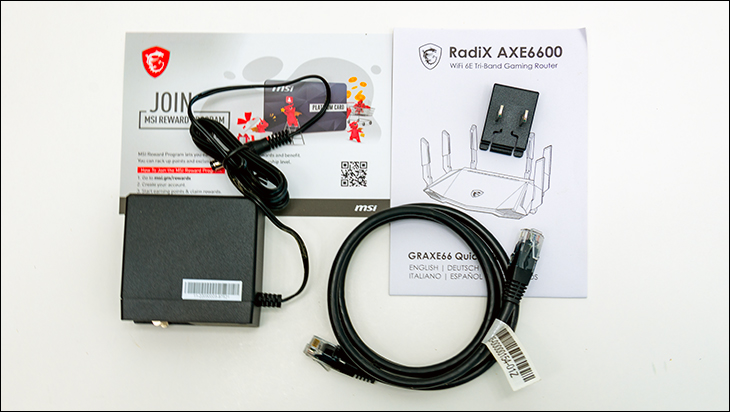
Moving on. The accessories are fairly decent for its price range. That is to say you can expect to find a quick-start manual, a warranty card, a single shielded Cat 6 1meter cable, and a power adapter. The inclusion of a single Ethernet cable is a pet peeve of ours as any “All In One” type device should always come with enough accessories to actually make full use of said All In One device. Make no mistake consumer routers are AIOs. They a Router. They are a (small) Switch. They are a Firewall. All In One. Which offends our classically trained and educated networking professional side. It is what it is. Yet for an AIO to come with a single $1 cable(?!)… that is not being frugal. It is being cheap. Sadly, this is the state of the consumer ‘router’ marketplace and it is the de-facto standard. As such, we cannot blame MSI (too much) for merely being ‘good enough’ and following the ‘industry standard’. Even if said standard is garbage.
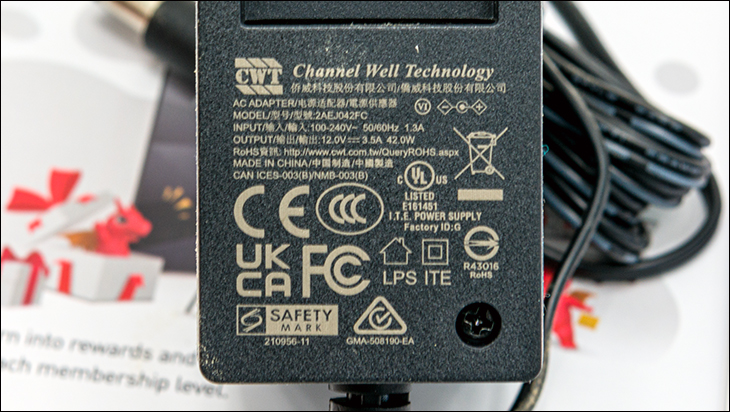
Thankfully the included wall wart power adapter does make up for the rest of the lackluster accessory count. To be precise MSI took EdiMAX’s advice and went with a more expensive CWT 12v power adapter instead of the typical ‘good enough’ option that yes EdiMAX also offer (for about 5 USD vs 2 USD). To be blunt, we would have thought a lot worse of MSI if it had been anything less than CWT. Put bluntly, in a sea of flaming dumpster fire 12v adapters (that underscore how sloppy ROHS, CL, and UL standards really are)… Channel Well Technology is one of the few that stand out as being actually good. Yes. We would have liked to have seen a Mean Well Technologies adapter (about twice the price and up) instead of CWT. But CWT are pretty much the epitome of ‘boringly reliable’ when it comes to low voltage power adapters. I.E. Just don’t pull more from them than their rating, and don’t pull their max rating constantly and they will last a long, long time.
